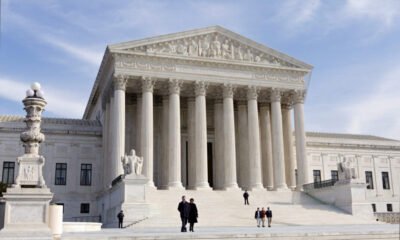Ann Scott Timmer
High Court Greenlights Ballot Measure for Judicial Retention

The Arizona Supreme Court has granted permission for voters to decide on Proposition 137, which could enable judges in the state to retain their positions without regular voter approval.
In a ruling issued late Thursday, the court dismissed arguments claiming that the proposition unlawfully seeks to amend distinct sections of the Arizona Constitution concerning judicial elections.
If passed, Proposition 137 would remove the current requirement for judges, selected by the governor, to periodically seek voter approval. Instead, only judges facing severe issues like felony convictions or poor evaluations would need to stand for re-election.
This change could allow other judges to remain in office until they reach the mandatory retirement age of 70, effectively granting them long-term security.
Notably, the measure would also permit the majority party in the Legislature to appoint two members to the Commission on Judicial Performance Review. Furthermore, it would mandate the commission to investigate any legislator’s complaints regarding judicial misconduct.
Challengers argued that these issues should be posed to voters as separate questions rather than encapsulated in a single proposition. However, Chief Justice Ann Scott Timmer stated in her opinion that the matters are closely related, justifying their inclusion as one question.
The decision was unanimous among the five justices present, as Justices Clint Bolick and Kathryn King recused themselves due to direct involvement in upcoming elections.
Both justices are seeking re-election on November 5, creating a significant potential conflict of interest pertaining to Proposition 137.
Prepared by Senator David Gowan, R-Sierra Vista, the proposition could have retroactive effects, potentially nullifying any voter decision to deny Bolick or King new terms if the proposition is approved.
Thursday’s ruling marks the beginning of a contentious debate over both the ballot measure and the futures of the two justices.
Progress Arizona has already mobilized efforts to oust both justices and defeat Proposition 137. They are not acting alone; organizations such as the National Democratic Redistricting Commission and Planned Parenthood Votes have pledged significant funding for judicial races in key states, including Arizona.
Bolick and King, both appointed by former Republican Governor Doug Ducey, hold pivotal votes on significant rulings, including one concerning the 1864 law restricting abortion access, which they ruled upheld earlier legislation that allowed abortions until the 15th week of pregnancy.
While the old law was subsequently repealed, the implications of their rulings are still felt, especially as a change in justices could bring about differing interpretations on abortion rights.
In response, conservative activists like Randy Kendrick are investing efforts to retain the current justices, emphasizing the court’s role as a guardian against perceived liberal overreach.
If passed, Proposition 137 would significantly alter the merit selection process of judges established in 1974, which relies on a combination of gubernatorial appointments and voter reviews every few years.
Supporters argue the existing system is overly cumbersome, with numerous judges on ballots, yet many judges have returned to the bench after facing voter decisions, often influenced by contentious rulings.
Organizations advocating for independent judiciary processes stress that voters should recognize the importance of informed decisions, not based solely on individual rulings.
Contrarily, opponents like Abigail Jackson from Progress Arizona argue that voters deserve the right to hold judges accountable, particularly following controversial decisions.
The court’s decision to place Proposition 137 on the ballot focused solely on whether it met legal standards, and Justice Timmer concluded that it adhered to regulations governing ballot measures.
“Proposition 137 complies with the separate amendment rule because its provisions are topically related and sufficiently interrelated to stand or fall as a whole,” Timmer stated.


















